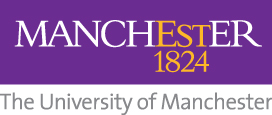The Roving Reader Files
The fourth instalment in our Roving Reader’s journey from Jamaica to England, through the primary and secondary sources in our library collection.
Louise Shore and Her Literary Ambitions
So far, we’ve learnt from intellectuals Una Marson and Joyce Gladwell, as we travel from Jamaica to England. But are you, like me, asking what our poor underprivileged companions have got to say?
Well, the disadvantaged have historically left few records of their own due to illiteracy, so if we’d asked that question even a hundred years ago, we’d probably have been told, “Not a lot. Hard cheese.”
Fortunately for us, more recently, there have been efforts in the UK to preserve the stories of underprivileged communities. For example, in the 1960s and 1970s initiatives sprang up in cities to improve adult literacy rates. Immigrants were welcomed, and encouraged to write down their memories, so they could practice reading with texts suited to their ages and cultures.
The Centre has a number of books produced by such initiatives. These primary sources fall somewhere between recorded interviews (oral histories) and written autobiographies, depending on how they were compiled. They preserve the perspectives of migrants, who came to the UK for economic opportunities lacking back home, and whose life stories would normally have sunk without trace.
Pure Running. A Life Story and So This is England are two such volumes, relating to Jamaica. Published in the 1980s, together they add further layers to our growing insight into the migration experience.
Pure Running fulfilled Louise Shore’s dream of writing her life story. One of sixteen children, and born in rural poverty in the 1930s, she’d been a bright student until ill-health and an illegitimate baby cut short her education. Arriving in London in 1960, she hoped to earn enough to support herself and her absent child. Generating income to support family was the most common reason for migrating.
Louise longed to achieve something, so in the 1970s she seized the opportunity to attend The Hackney Reading Centre to improve her literacy. Over six long years she and her teachers collaborated to record and put together her autobiography. The resulting book looks unusual. It preserves Louise’s side of a dialogue, presented in larger-than-normal type, with the first chapters broken into short lines to make the reading experience easier.
By contrast, So This is England was a compilation of short original writings by thirty mature student contributors at a London college, who formed their own working group at The Peckham Publishing Project, to compile and publish the book. Unlike Louise Shore, many had arrived in the UK as children, joining their parents.
Listening to the voices from these two books, we gain a new perspective on migration that complements those of Una Marson and Joyce Gladwell. So what do we learn?
Louise recounts a dispiriting tale of thieving housemates, cheating male friends and betrayed trust, alongside the inevitable inadequate housing, discrimination and scarce employment. So This is England provides child’s eye reminiscences of an almost uniformly sunny Jamaica filled with the warmth of extended family, whilst the UK frequently inspired much darker memories – of rejection by parents, domestic violence and family breakup, as well as inability to come to terms with the loss of the Jamaican home. Joyful anticipation at the thought of reunion soon evaporated in the face of small drab houses, on cold dark streets, among strangers.
Not a pretty picture. Here in the raw are the practical realities facing the economic migrants of yesteryear, as they tried, in very difficult circumstances, to establish themselves and their families in a new land that was too often far from welcoming. That they survived counted as a great success, but for many that success was won at terrible cost.
We’ve journeyed a long way with our travelling companions. In this series, we’ve discovered the context of migration from Jamaica to England, and listened to the stories of the educated and uneducated, Black and Brown, privileged and underprivileged. Just as we had hoped, our secondary and printed primary sources have together shed light on the triumphs and the disasters of migration.
Take it from me, the Centre has lots more like this to offer, about many different communities around the world. I hope dipping our toes in the water has encouraged everyone to come along to get stuck into planning mystery tours of their own.
The majority of the contributors to So This is England were from Jamaica, attending South East London College and Bookplace. It was published by The Peckham Publishing Project (a community-based initiative) in 1984. Louise Shore’s Pure Running. A Life Story was published in 1982 by Centerprise on behalf of The Hackney Reading Centre, as a collaboration between Louise and three of her teachers, who were right to point out the importance of the book, because very little had been published by women like Louise.




3 replies on “From Jamaica to England – Part 4: Adult literacy projects as primary sources”
[…] previously met Jamaican Londoner Louise Shore, whose ambition to write her autobiography was achieved with the help of the Hackney Reading […]
[…] the Adult Literacy Projects, I don’t have updates about Louise Shore and the individuals who contributed to So This Is […]
Reblogged this on imissyoutorrelrip.